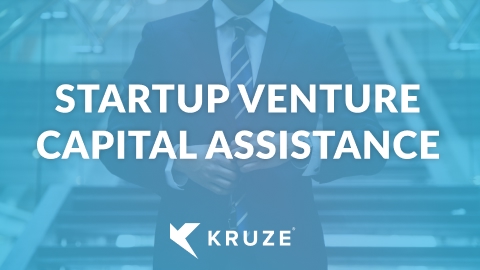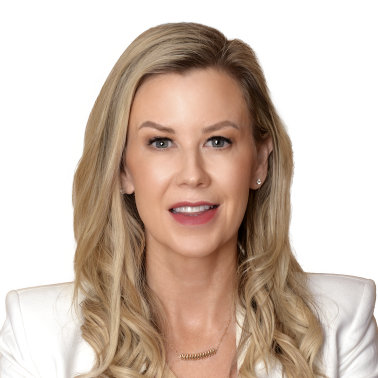
Every startup should be sending their investors an email update every month - an “investor update.”. And the earlier in the month, the better. It’s nice to have that conversation going with your investors so that they can help you when you need it. After all, these people have invested in the company, they want it to succeed - and you can really use their help.
So let’s go through my preferred startup investor update template.
Example startup investor update template
The first segment is what I call financial metrics. And so this is going to be stuff like your revenue or annual recurring revenue, ARR if you’re a SAAS company. You want to make sure that everyone knows exactly where you are with this metric; it’s the metric that helps them understand how your startup is growing and when you might be big enough for the next round of venture capital.
The next one is going to be your burn rate. And there’s kind of two versions of burn rate, but the first is your net burn rate, which means after all the revenue and cash you’ve collected, minus all your expenses and cap expenditures, that’s your net burn rate. That’s how much cash went out the door that month. Now, sometimes people like to do a gross burn rate, which is essentially the cost structure of the company, meaning forget all the revenue and cash collected. Just what was the total expenses of the company? That’s nice, investors especially early stage, they like to know that because if revenue goes to zero, they know kind of exactly what the burn is going to be going forward.
The next thing you’re going to want to do is actually do the math for them and show them exactly how much cash you have in the bank right now, super important, and then divide that by your net burn rate, and that will be your months of cash runway. So I like to give it in a number like 15 months. I also like to give them a cash out date like, maybe December 2021, something like that. So everyone kinda knows exactly what’s going on in the financials. You can also do a more complicated cash out date calculation if you want, using a financial model. Make sure it’s clear how you are calculating this cash out date!
There are some other kind of little things you can do, like maybe include bookings, which is basically all the contracts, the total contract value you’ve signed that month. That’s a useful metric for enterprise/b2b startups to include in their investor update. Also, sometimes people like to include full time head count, because that gives like another nice little proxy for the cost structure. But those are really the big ones.
Now the next segment is going to be some type of, I call it like engagement metrics, are people using the product. And maybe you’re pre-launch, and this isn’t even an issue with you. But if you’re pre-launch, maybe you want to include something like, all the potential customers you’ve talked to or meetings you’ve had discussing features, things like that. If you have a product in the market, I really recommend including some type of engagement and the simplest one is monthly active users, especially if like SAAS or consumer internet companies, even health tech, that’s all the people who’ve used it over the month. That’s usually probably your biggest number. Sometimes I see companies break it down to weekly active users or even daily active users. Typically they’ll kinda give all three of those metrics if they’re going to give the daily and weekly. But that’s nice because the investors can look at and see if your daily or weekly actives are close to monthly, it means there’s super high engagement. And people are using the product quite a bit. If it’s a lot lower number, it means people are only kind of coming by once a month. And so there could be a problem. So that’s why this is like an early warning sign for both the executive team and the investors. And by the way it’s really powerful just to write these types of updates, the executive team is forced to learn and think about their business metrics as they collect and write them down. And this is one of the reasons I recommend them.
Sharing good and bad news in your investor update email
So, the next segment in investor update emails, people do this different ways. So there’s no kind of absolute must, but my preferred way of doing this is saying, what’s going well and what’s not going well? And having a big, broad discussion in both categories. Other people and I don’t blame you if you want to do it this way, like to take a very functional approach, meaning product, team and customers. And they typically like to explain everything that’s going on with the product, everything that’s going on with the team, everything that’s going on with customers, that is a perfectly fine way of doing it. It’s a very functional approach, which it’s all good.
I prefer to do the what’s going well and what’s not going well and actually discuss those three functional aspects within each category. So for example, in the what’s going well, you might talk about all the progress you made on the product and all the progress you’ve made, signing up new customers. And maybe some of the new hires that you have either in the pipeline or who have already committed. And then you’re going to talk about what’s not going well about the product. Maybe you have some bugs or you have a feature that you just can’t quite crack, or don’t know if you should actually do it, or maybe you’re struggling with recruiting or maybe you haven’t signed up as much customers as you would like at this point. I find that having the positive news bunched together, kind of it makes for joyous reading and people really like that.
And then having the negative news bunched together, really helps investors put their problem solving hat on as they’re reading the negative news, and really think proactively instead of kinda sorting back and forth. That’s just me. That’s how my brain works. That’s how a lot of my investor friend’s brains work. But again, do it the way you want to do it.
The next section I would cover is things you need help on. It is perfectly fine to ask help from your investors. It shows you’re self-aware. It shows you want the company to be successful. And guess what - they want the company to be successful. They’re going to go out of their way to make intros. They’re going to help you with recruiting. They’re going to help with customer intros or any other kind of functional expert intros you need. And just don’t be afraid to ask.
If you are going to ask your investors to share something via email or social media, a great idea is to give them a template / blurb that they can copy paste. Your investors don’t want to have to rewrite the company’s description, for example. Or don’t ask them to figure out what the right landing page is or the what the right CTA is - write it for them so it’s super simple for them to take action. Don’t worry, they won’t be offended you tried to do their work for them - they’ll actually appreciate it, and even if they don’t want to use the exact copy you put in the template, they can use it as a basis for how they want to say it.
Bonus points, if you can actually post links to the jobs that you’re actually recruiting for that you’re asking them to help you fill. Also, if you’re looking for intros, please post LinkedIn profiles and things like that to make it easy for them to just get in there and shoot an email out. So they want to help you ask for help.
Now the next segment is what like to call thank-yous. And I don’t see a lot of companies doing this, but I see some of the best companies I work with doing this. So I thought I’d pass it on. It is kinda like the shout outs from the last month. And what I see entrepreneurs doing is recognizing the people who are actually helping with intros or other types of assistance, like technical assistance or other things that need to happen with a startup. It’s really powerful. And it creates this really positive cycle where if an investor doesn’t see their name in the shout out or thank you section, they want to get in there next next month. And it’s good kind of branding for them because all investors kind of know each other or want to know each other. So I really love the thank you. And I think it also just shows a humbleness and appreciation on behalf of the founder.
So those are the segments I highly, highly recommending any startup investor update, and that’s why I included them in this template write up.
I have one little note for all the investors out there. Your founders, the executive team are putting a ton of time into these updates. Please respond and please respond with something positive Like, thanks. You’re doing great. Or I liked the progress or let me know how I can help, or I will help you. Anything that kind of recognizes the effort they’ve put into it will be very helpful. It’ll be very appreciated by the founder.
Investor Update Templates - Several Examples
Alright, since we get so many different updates from the startups that we work with, we’ve got several examples that we can share. Some require more work and effort, others can be done in 5 minutes (if you’ve got your data set up to produce the numbers you need!). Here are the update templates that we’ll share:
- Startup investor update email outline - this is our standard template. It has more space for prose, which means that you, as the founder, will need to put more thought into it. This is going to take some time, so it’s not as fast to produce as others.
- Simple investor email update - this is a fast, no-nonsense update. It’s a great place to start, and can usually be produced in just a few minutes, assuming you have the data you need handy.
- Getting close to fundraising investor update - this is the outline to use when you are approaching a fundraise. We recommend sending it to VCs that you are courting. It’s a great way for them to get to know you, build a “relationship,” and - as you’ll see in the template, provides some forward looking goals. The idea is to achieve those goals, so that you can prove to the VC that you are great at execution.
Startup Investor Update Email Outline
This is the standard update email we recommend. It will take some thought, since you are reporting not just numbers but also your thoughts on the company’s progress and highlights.
- Summary
- Bullet points
- Short and easy to skim
- Financials/KPIs
- Runway
- Burn rate
- Cash flow
- Revenue (if applicable)
- Customers (if applicable)
- Product updates
- Milestones
- HR and team updates
- Ask in the investor update for help if you need it
- Securing funding (of course)
- Business strategy
- Hiring recommendations
- Vendor recommendations
- Product feedback
- Customer referrals
- Thank investors who helped you BY NAME
Simple Investor Email Update
This is a great template to use when you are first starting out, if you are afraid that you lack the discipline to really commit to writing a lot to your investors, or if you don’t want to commit too much time to creating updates.
-
Financial Metrics
- ARR: [Amount] ([Change] month over month)
- Paying Customers: [Number]
- FTE Headcount: [Number]
- Expected Runway: [Duration] (ZCD [Zero Cash Date])
- Engagement Metrics (end [Month], preliminary)
- End-Month MAU: [Number] ([Change] MoM, [Change] YoY)
- Weekday averages (all users): [MAU], [WAU], [DAU] ([DAU/MAU]%)
- What’s Going Well (some ideas below)
- Market Conditions & GTM: [Summarize any positive changes in market conditions and go-to-market strategy, including bookings and close rates.]
- R&D Progress
- Hiring
- What’s not going well
- Churn
- Requests
- Introduction to UX designers [example]
Investor Update for Startups Getting Close to a Fundraise
One great strategy for startups getting close to a fundraise is to share monthly updates with potential investors. Founders usually begin to have conversations months, if not quarters, in advance with potential new VCs. Ask them if you can share your monthly update emails with them - they are going to say yes. Use this to prove to the VCs that you can execute by listing out goals, then knocking them down. Plus, the investors will think that they’ve developed a relationship with you, which helps in many, many different ways.
- Financial Metrics (end [Month], preliminary)
- Last Month’s Goal: [Goal]
- Outcome: [Achieved/Partially Achieved/Not Achieved]
- ARR: [Amount] ([Change] month over month)
- Paying Customers: [Number]
- FTE Headcount: [Number]
- Expected Runway: [Duration] (ZCD [Zero Cash Date])
- Next Month’s Goal: [Goal]
- Engagement Metrics (end [Month], preliminary)
- Last Month’s Goal: [Goal]
- Outcome: [Achieved/Partially Achieved/Not Achieved]
- End-Month MAU: [Number] ([Change] MoM, [Change] YoY)
- Weekday averages (all users): [MAU], [WAU], [DAU] ([DAU/MAU]%)
- Weekday averages (key users): [MAKU], [WAKU], [DAKU] ([DAKU/MAKU]%)
- Next Month’s Goal: [Goal]
- Last Month’s Goal: [Goal]
- What’s Going Well
- Last Month’s Goal: [Goal]
- Outcome: [Achieved/Partially Achieved/Not Achieved]
- Market Conditions & GTM: [Summarize any positive changes in market conditions and go-to-market strategy, including bookings and close rates.]
- R&D Progress: [Share achievements related to research and development, such as bug fixes, issues per customer, and pull requests per engineer.]
- Next Month’s Goal: [Goal]
- Last Month’s Goal: [Goal]
- What’s Not Going Well
- Churn: [Describe issues with customer churn and attempt to explain trends or specific reasons.]
- Last Month’s Goal: [Goal]
- Outcome: [Achieved/Partially Achieved/Not Achieved]
- Next Month’s Goal: [Goal]
Some other tips for your email investor update
Here are some other tips for your regular/monthly investor update email! First of all, use a consistent format so that you can train investors where to look for specific information. For example, do it in email with the same bulleted list, or in a PDF, etc. Secondly, provide clear, key highlights so they can get to overview quickly and know how much they need to dive in - and if they need to call you to chat.
Include details that go in deeper when necessary. If you use a consistent format in your investor update, it will be easy for them to navigate to the details when they want to dig deeper. Having good expectations on what you’ll include every month will help them efficiently understand what to expect and how to find it.
Have a deadline / schedule - and stick to it. Your investors will come to expect your updates at particular points in the month. Get them used to the cadence! And by sticking to the cadence, you help prove to them that you are a good operator and steward of their investment.
The Importance of High-Quality Communication with Venture Capital Investors
Investor communication is not just about sending investor updates; it’s about building a strong and transparent relationship with your venture capital investors. Let’s dig into the significance of clear, insightful, and constructive communication and how it can be really helpful in guiding your startup to success.
Communicate Regularly with Your Investors!
Engaging with your VC investors may sound simple, but it is often overlooked. Many startups fail to send regular updates, missing opportunities to leverage investors’ expertise and support. Regular communication, ideally on a monthly or at least quarterly basis, is crucial to keep your investors involved.
A Schedule is a Great Idea for Investor Updates and Communication!
Consistency is key to effective communication. Send updates on a regular day, such as the 1st, 10th, or 15th of the month. This habit ensures a steady flow of information and helps both you and your investors stay aligned. It also fosters a routine that benefits your startup, much like consistent exercise or a healthy diet. Sticking to a schedule will help you keep the communication flowing.
Honest Investor Updates That Include the Good and Bad are Best
High-quality communication is more than just sharing numbers and facts. It should include constructive and informative updates that allow investors to provide insightful feedback. Your investor updates should cover:
- Your cash position
- The previous month’s burn rate
- An ARR estimate if applicable
- Wins and misses from the last month
And most importantly, don’t shy away from sharing the bad news. Open and honest communication, even about challenges, builds credibility and enables your investors to assist you more effectively.
Don’t be Afraid to Ask Your Investors for Help
Don’t be afraid to ask your investors, in your updates, for support, introductions, or recommendations. While they are investing in your business and expecting growth, they are also there to provide support, insights, and connections that can propel your startup forward. If you need recommendations for new hires, vendor selections, or strategic guidance, reach out to your investors. They often have solid networks.















